| © Copyright Robert Cole 2015
- No copying or distributing YAMASHIRO YAMASHIRO RAI KUNIMITSU School |

|
 |
_____________ RAI KUNITOSHI SHO-O 1288 _________|___ RAI KUNIMITSU(1) SHO-WA 1312 through KA-REKI 1326 |_________________________ _________|___ ____|____ RAI KUNIMITSU(2) KEM-MU 1334 SUYEYOSHI RYAKU-O 1338 (MITSUSHIGE) RAI KUNIMITSU(1) KA-REKI (f: KUNITOSHI): JIROBE. Second A noted TANTO maker, KUNIMITSU also made TACHI. TACHI may have a fairly wide CHU or HIRO-SUGU KO- One expects to see SUGUHA TANTO, but some pieces KUNIMITSU has "low" BOSHI (wide from the point) and His signature is easily recognized. TACHI-MEI are |
KOKUHO RAI KUNIMITSU
|
KUNIMITSU(2) KEM-MU: RAI MITSUSHIGE of GEN-TOKU 1329. SAZABEInoJO MOKUME HADA. SUGUHA and NOTARE BA. SUYEYOSHI RYAKU-O 1338: Student of KUNIMITSU.
|
|
Bunkazai Rai Kunimitsu
|
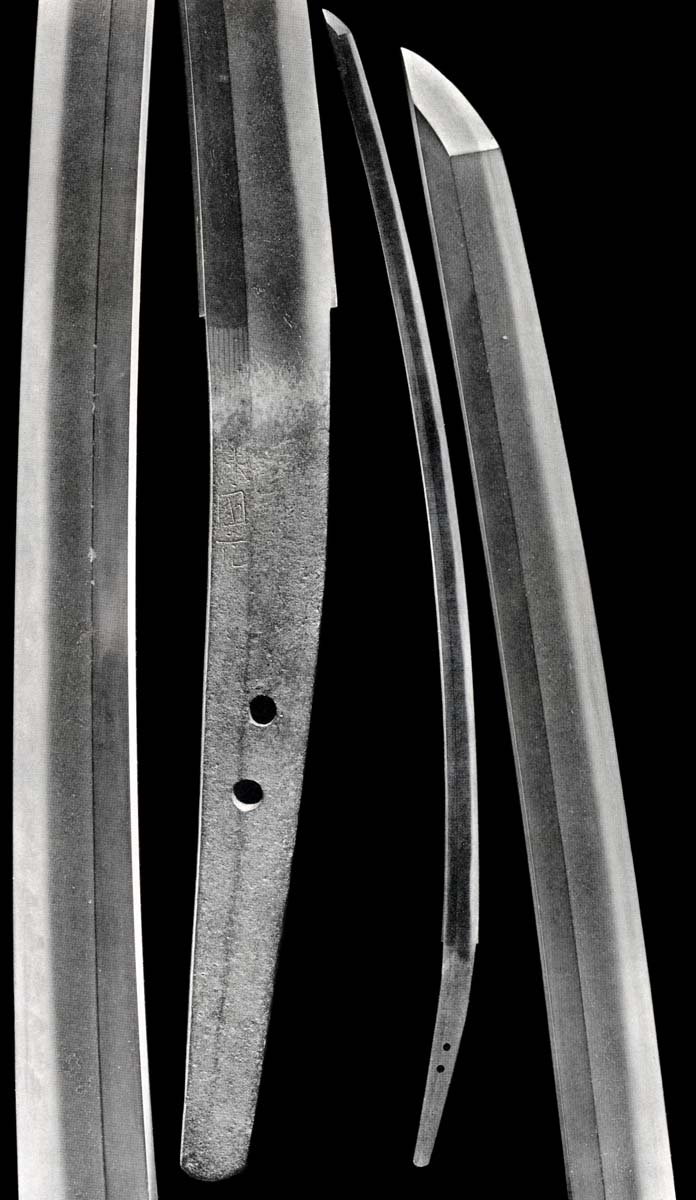 Rai Kunimitsu - Kokuho Nagasa: 83.9cm - Ni Shaku Hachi-Sun Moto-Haba: 3.1cm Large Shinogi-Tsukuri, Ihori-Mune, deeply curved Chu-Kissaki. Itame Hada with Ji-Nie. Asaki-Notare Ko-Nie Deki Chu-Sugu of leaning Saka Gunome-Midare Ba with Ko-Ashi, Yo Kinsuji and Sunagashi. Notare-Komi Hakikake Boshi to Yakizume. Ubu Nakago with two Mekugi-ana. Signed in the upper Ji. Rai Kunimitsu |
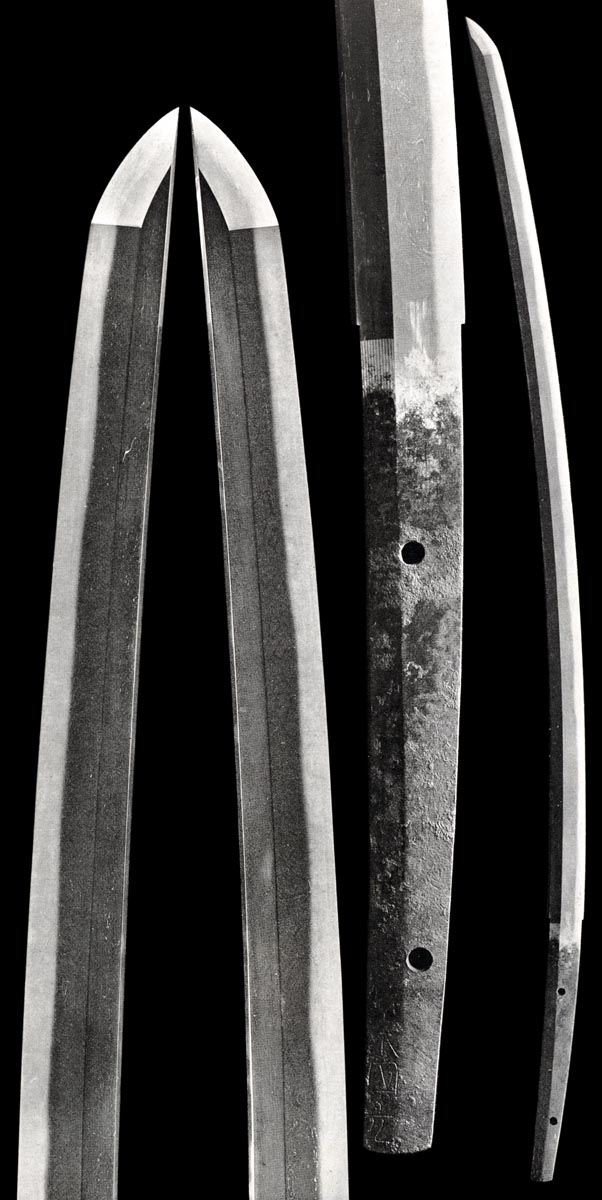 Rai Kunimitsu - Kokuho Nagasa: 69.5cm Moto-haba: 2.6cm Shinogi-Tsukuri, Ihori-Mune, Chu-Kissaki. Rai Ko-Itame Hada with thin Ji-Nie. Nioi-Fukashi and Ko-Nie Chu-Sugu of gentle Asaki-Notare wherein Gunome-Midare Ko-Midare Ba has Ashi, Yo and Sunagashi running. Midare-Komi Hakikake Boshi. Suriage Nakago with two Mekugi-ana. Signature at the bottom. Rai Kunimitsu |
|
Kokuho Yuraku Kunimitsu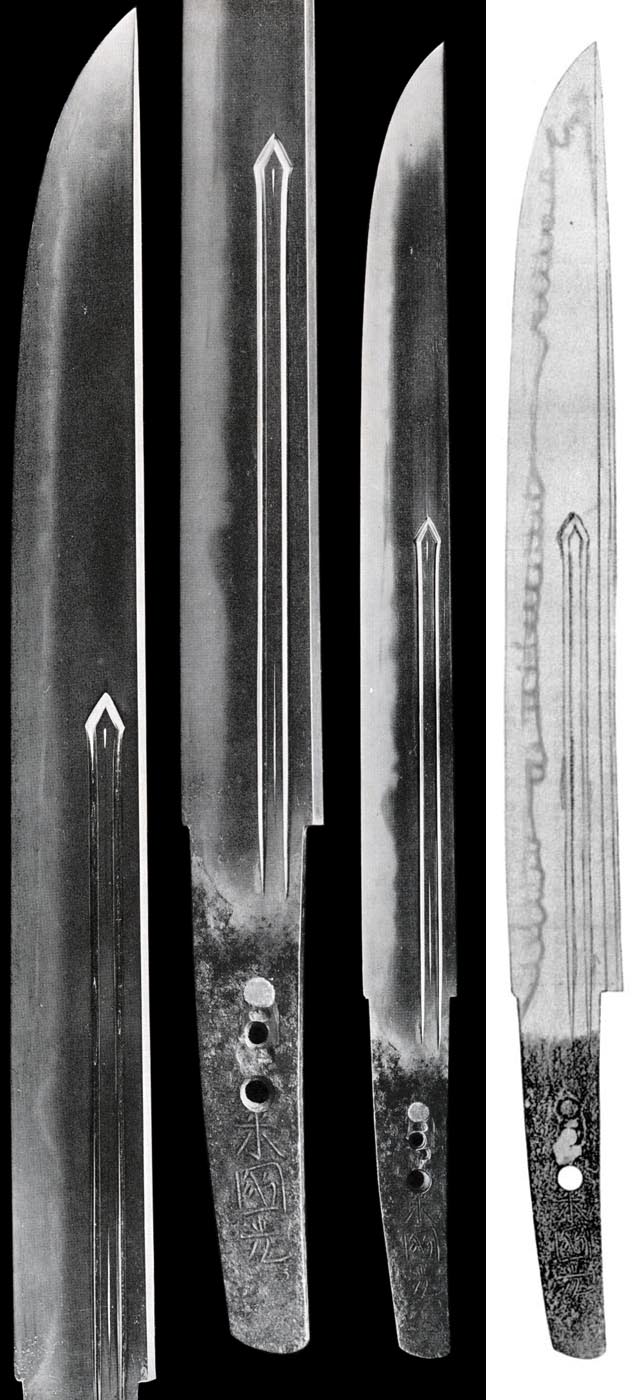
|
Rai
Kunimitsu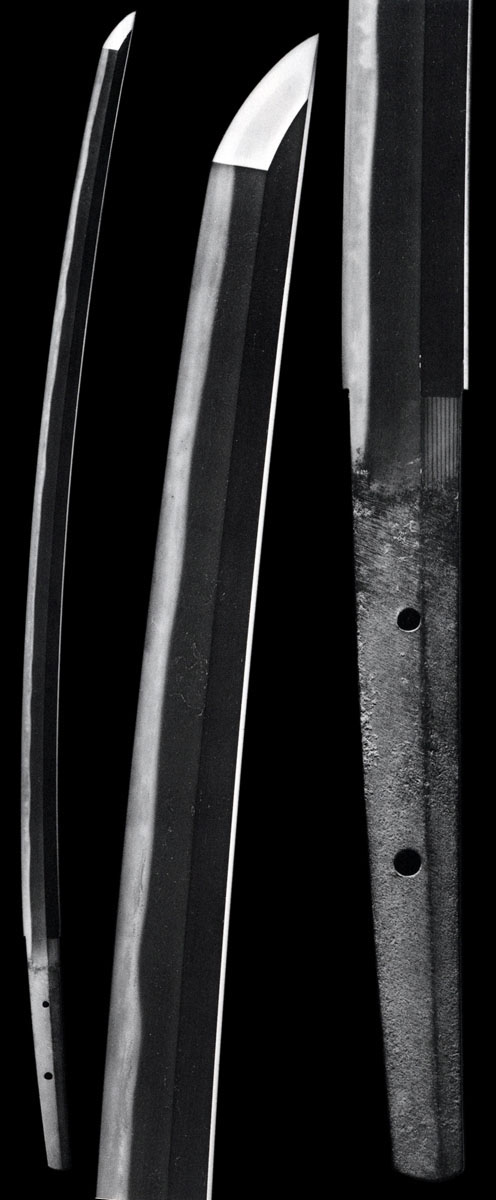 Goto Museum Rai Kunimitsu Nagasa: 73.1cm Described in the Tokugawa Jikki Shinogi-tsukuri, Ihori-mune, elegant curve and Sugata, generally. Ko-Itame with thin JiNie shows occasional Rai-Hada. Sunagashi, Rai-NieJiba and Kinsuji cut and strafe Ko-Gunome Choji Midare Ba that becomes Niju in the upper. Nearly perfect Rai-Boshi finds Rai-style Maru Kaeri. O-Suriage Nakago has two Mekugi-ana. |
BUNKAZAI KUNIMITSU - IKEDA RAI
|
Rai
Kunimitsu Tachi
|
|
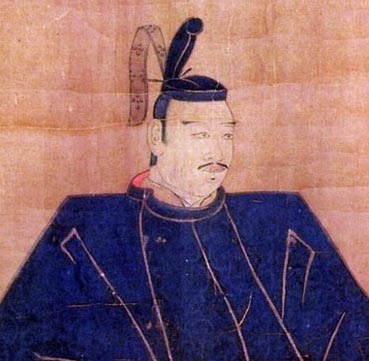 |
|
|
Nagasa:76.7cm Ii Family Conservancy KOZUKE resident of MINOWA Castle until 1598, Naomasa moved to TAKASAKI, WADA-JO. At SEKIGAHARA he defeated SHIMAZU YOSHIHIRO, who fled south to SATSUMA, and proceeded to arms manufacturing center, SAWAYAMA in OMI, trapping ISHIDA KAZUSHIGE's Family. The lot there committed suicide, after which IYEYASU gave Naomasa the castle and province. They soon moved to HIKONE where the Ii Family resided until the Restoration. RAI KUNIMITSU TACHI in classic SUE-KAMAKURA style, BO-HI and wide HIRO-SUGU CHOJI MIDARE BA.SURIAGE NAKAGO with two MEKUGI-ANA and signed: Rai Kunimitsu |
_________ SHIGETAKA KEN-GEN 1302 _____________ 1st SHIGEFUSA TOKU-JI 1306 _____________ 2nd SHIGEFUSA TEI-JI 1362 ________ ________ KUNITAKE GEN-O 1319 SUKEYASU GEN-KYO 1321 __________ ________ ________ ______ YOSHICHIKA HIDESUKE MUNENAGA KUNITO - SHO-KEI 1332 - KEM-MU 1334 KO-KOKU 1340 __________ ________ ________ _________ SHIGEYOSHI NAGAMASA KUNIKAZU HIDETOSHI - KO-EI 1342 - - TEI-WA 1345 - ________ ________ __________ _______ _________ KUNISUYE KANEYASU SHIGETSUGU KUNIAKI MUNESHIRO - BUN-WA 1352 - ________ _________ ________ _______ KUNITOMO YOSHIKUNI KUNIHIRO IYEZANE - EN-BUN 1356 - ________ _________ NORIKANE O-AN 1368 KUNIYOSHI O-AN 1368 ____|____ ________ _________ YOSHIMUNE MEI-TOKU 1390 KANEYASU HIROTSUGU ________ - KA-KEI 1387 - NARIMUNE MEI-TOKU 1390 __________ ________ MITSUSHIGE (JUJU) O-EI 1394 YUKIHIDE(1) EI-TOKU 1381 _________ ___|____ MITSUKATA(1) (JUMEI) O-EI 1394 YUKIHIDE(2) O-EI 1394 ____|____ MITSUKATA(2) (JUMEI) BUN-AN 1444 ________ ________ __________ _________ _________ HIROKUNI YUKIMUNE YOSHITSUNA YOSHIMUNE SADAMITSU - O-EI 1394 - ________ ________ KUNIFUSA HO-TOKU 1449 KUNISADA O-NIN 1467 _______ ________ _______ IYEZANE KUNINOBU NAOMUNE - BUN-MEI 1469 - ________ KUNIYASU EI-SHO 1504 |
|